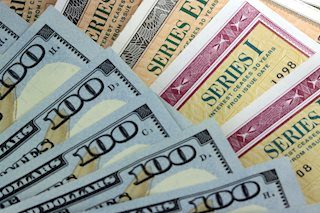The Treasury Dollar: Behind the greenback's fall
|
- Dollar decline accelerated as Treasury rates plunged to record low.
- Funding flows from Japan and Europe likely sources.
- US Treasury rates remain positive despite recent fall.
Over the past two weeks the dollar has exchanged its safe haven status in the currency markets for its funding role in the financial world’s ultimate lock-box, US Treasuries.
As the viral crisis has mutated into something like an existential event for stocks, raising fears of falling company profits, an extended global economic slowdown or recession, American government securities became the panic yield of choice.
Treasury rates and the EUR/USD and USD/JPY
US 10-year Treasury
The euro closed at 1.0783 on February 20th and began climbing the next day. Its rise accelerated on the 27th just three days after the yield on the US 10-year Treasury broke through its all-time low of 1.385% to close at 1.3777 on the 24th.
The USD/JPY exhibited the same pattern. Its high was on February 20th at 112.07. The plunge came on the 28th as the pair crossed the support line at 109.60, falling from its open at 109.83 to 107.86 at the close. The bottom of 102.37 was on the 9th, as with the euro, and on the 10th yen dollar yen concluded at 105.64.
German and Japanese sovereign rates
February the German 10-year Bund was yielding -0.481% and the Japan equivalent JGB was at -0.07%.
The three largest government bond markets in the world are the US followed by the Eurozone and Japan. As US yields broke to new lows on February 24th and it became clear that the Coronavirus inspired economic fears were going to hit the United States as well, and that the recovery might stretch well into the second quarter investors began a panicked chase for any remaining yield in bonds.
At the open February 24th the US-10 Year held an almost 2% advantage of the German 10-year Bund and 1.5% over its JGB counterpart. In addition the US debt held the inestimable value of preserving capital with a positive yield.
In the swirling uncertainty of the world's economic future the measured flows to US Treasuries of the prior weeks became a torrent.
Information on these pages contains forward-looking statements that involve risks and uncertainties. Markets and instruments profiled on this page are for informational purposes only and should not in any way come across as a recommendation to buy or sell in these assets. You should do your own thorough research before making any investment decisions. FXStreet does not in any way guarantee that this information is free from mistakes, errors, or material misstatements. It also does not guarantee that this information is of a timely nature. Investing in Open Markets involves a great deal of risk, including the loss of all or a portion of your investment, as well as emotional distress. All risks, losses and costs associated with investing, including total loss of principal, are your responsibility. The views and opinions expressed in this article are those of the authors and do not necessarily reflect the official policy or position of FXStreet nor its advertisers.